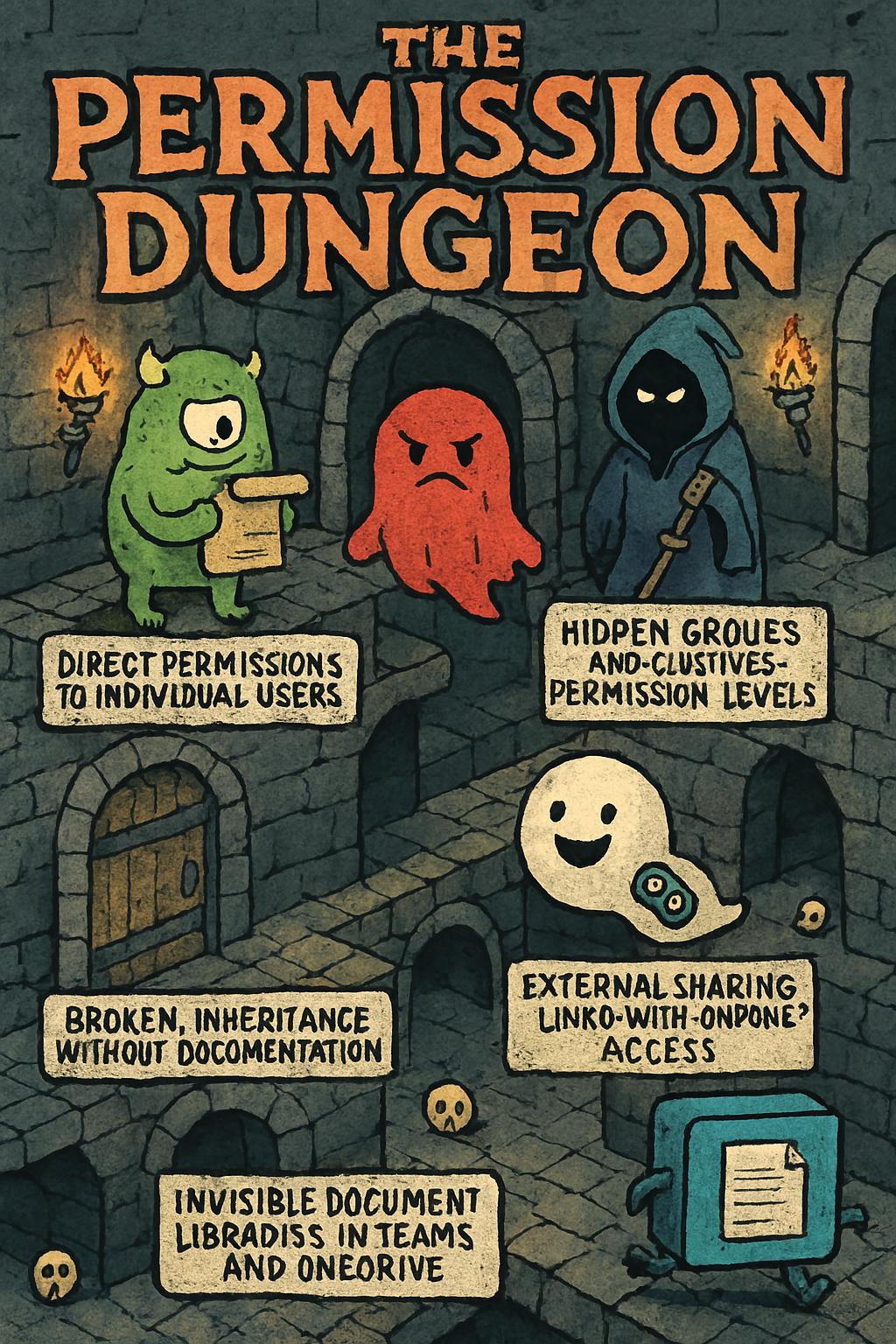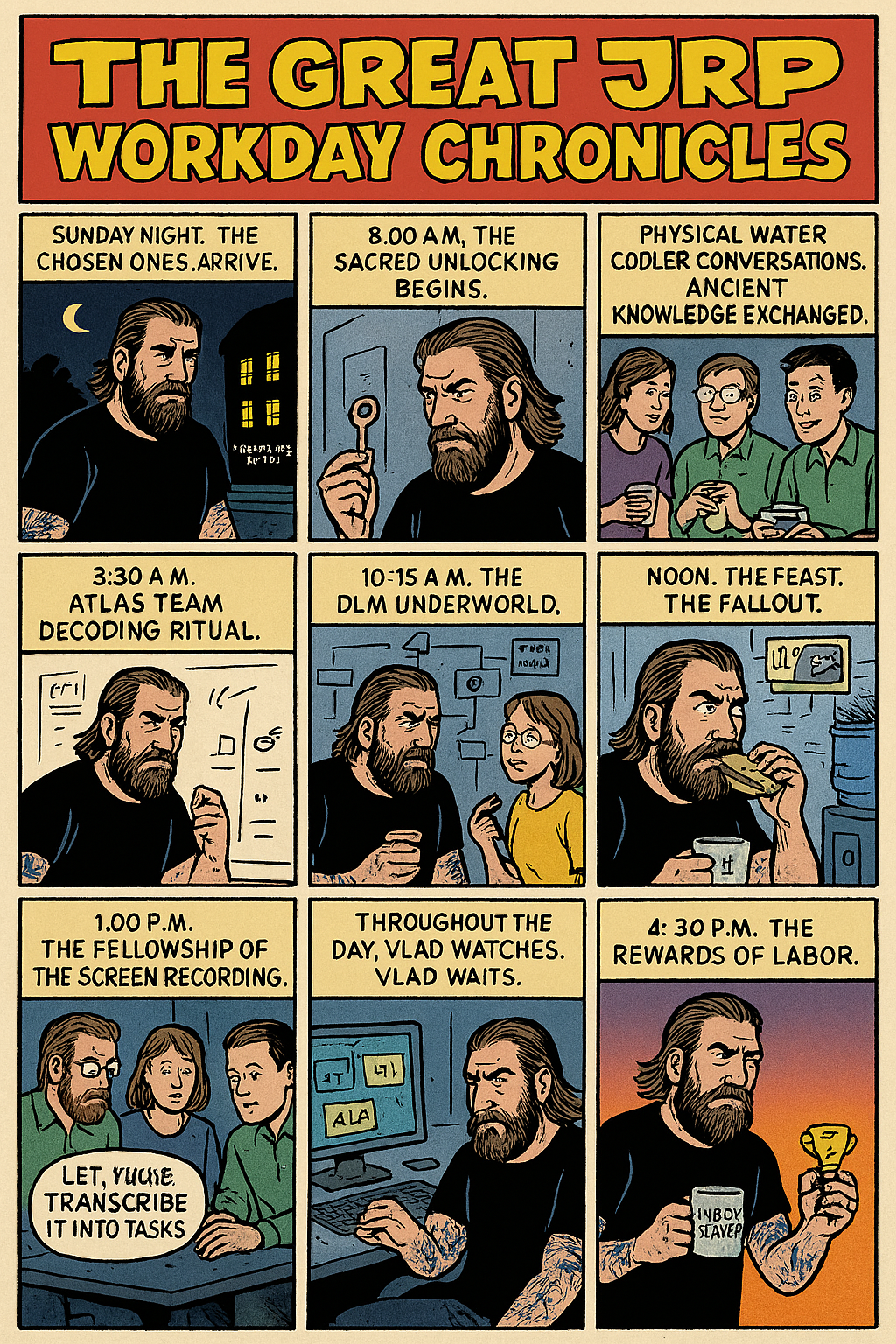Secrets Behind SharePoint You Can’t See

🔐 1. Hardcoded Secrets in Documents
- SharePoint often stores internal documentation with embedded API keys, passwords, and tokens.
- Vulnerabilities like the recent zero-day exploits (CVE-2025-53770 & CVE-2025-53771) allowed attackers to extract these secrets without authentication.
- The infamous
passwords.xlsxfile is real—and often shared internally like a cursed relic.
🧟♂️ 2. Invisible Permissions Jungle
- SharePoint’s permission system is a labyrinth of nested groups and hidden access rights.
- Rogue access can be concealed by:
- Placing users in obscure nested groups.
- Assigning “full access” disguised as limited permissions.
- Duplicating and exfiltrating files from hidden libraries.
🧨 3. No Visibility, No Control
- Admins often can’t see who has access to what, especially in large orgs with thousands of files.
- Removing access after a breach is notoriously difficult—especially with slow M365 permission propagation.
- Anonymous sharing links (default in M365) can expose sensitive Teams files without trace.
🧠 4. AI-Generated Phishing & Social Engineering
- AI tools can craft convincing phishing emails using real employee data pulled from SharePoint.
- Human error remains the top vulnerability—especially when users trust internal documents blindly.
🧬 5. Secrets Leaked More in SharePoint Than in Code
- GitGuardian’s research shows that collaboration tools leak more secrets than source code repositories.
- Why? Because SharePoint is treated as a safe internal space—until it’s not.
🛡️ Mythic Takeaway
SharePoint isn’t just a document repository—it’s a digital underworld where secrets, permissions, and shadow access converge. To truly secure it, you need:
- Automated secrets scanning across documents.
- Permission audits with visual mapping.
- Narrative reframing: treat every folder like a vault, every user like a potential rogue agent.
🕳️ Examples of Invisible Permissions Issues in SharePoint
🔍 1. Direct Permissions to Individual Users
Instead of using SharePoint or Microsoft 365 groups, some admins grant access directly to individual users. Over time, this creates a tangled web of one-off permissions that are nearly impossible to audit. You might have dozens of users with edit rights to a sensitive folder—and no one knows why.
🧬 2. Broken Inheritance Without Documentation
When a folder or document breaks permission inheritance from its parent site or library, it creates a unique permission scope. These changes often go undocumented, leading to unpredictable access control. A file may appear secure but actually be exposed to unintended users.
🕵️♀️ 3. Hidden Groups and Custom Permission Levels
SharePoint allows creation of custom groups and permission levels. These can be misconfigured or hidden from standard views, giving users more access than intended. For example, a “Contributors” group might have full control instead of edit rights due to a misassigned permission mask.
🌐 4. External Sharing Links with “Anyone” Access
Files shared via “Anyone with the link” settings bypass internal permissions entirely. These links can be forwarded, indexed, or accessed by unintended parties. Worse, they often remain active long after their intended use.
🧱 5. Invisible Document Libraries in Teams and OneDrive
SharePoint backs file storage for Microsoft Teams and OneDrive. Many users don’t realize that sharing a file in Teams may expose it via SharePoint with different permissions. These backend libraries are rarely audited, creating blind spots.
🛡️ What You Can Do
- Use group-based permissions instead of individual assignments.
- Regularly audit broken inheritance and unique permission scopes.
- Restrict external sharing to “Specific people” or “Existing access only.”
- Visualize permission hierarchies using tools like DeliverPoint or ShareGate.
![]()
Discover more from Vladimir Kuljak
Subscribe to get the latest posts sent to your email.

October 14–15, 2025. The Forum C chamber at Burge Union transformed into a strategic amphitheater where the ATLAS KU team…
![]()

October 13, 2025. A date that shall echo through the halls of JRP like the sound of a rogue Camtasia…
![]()





